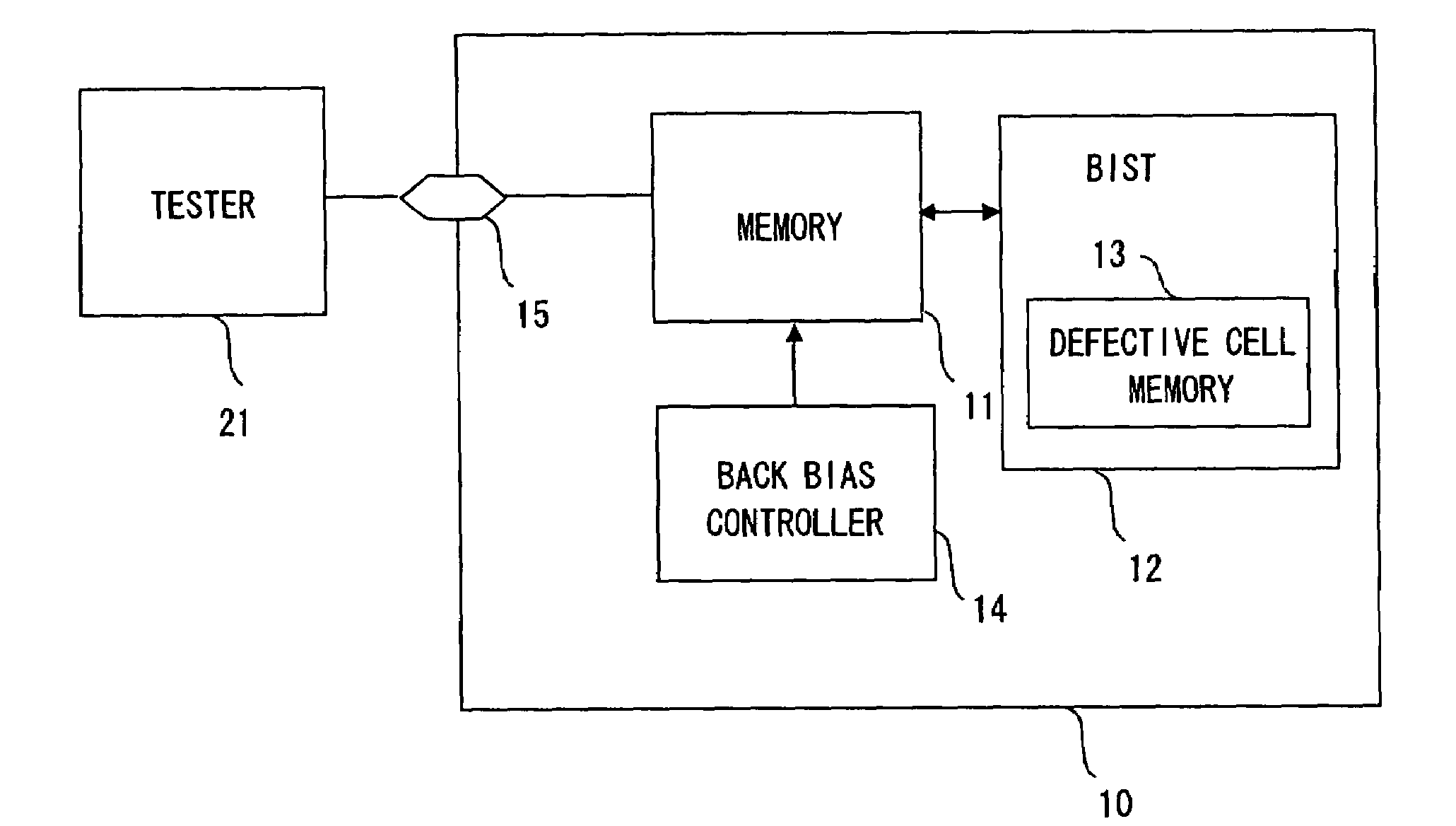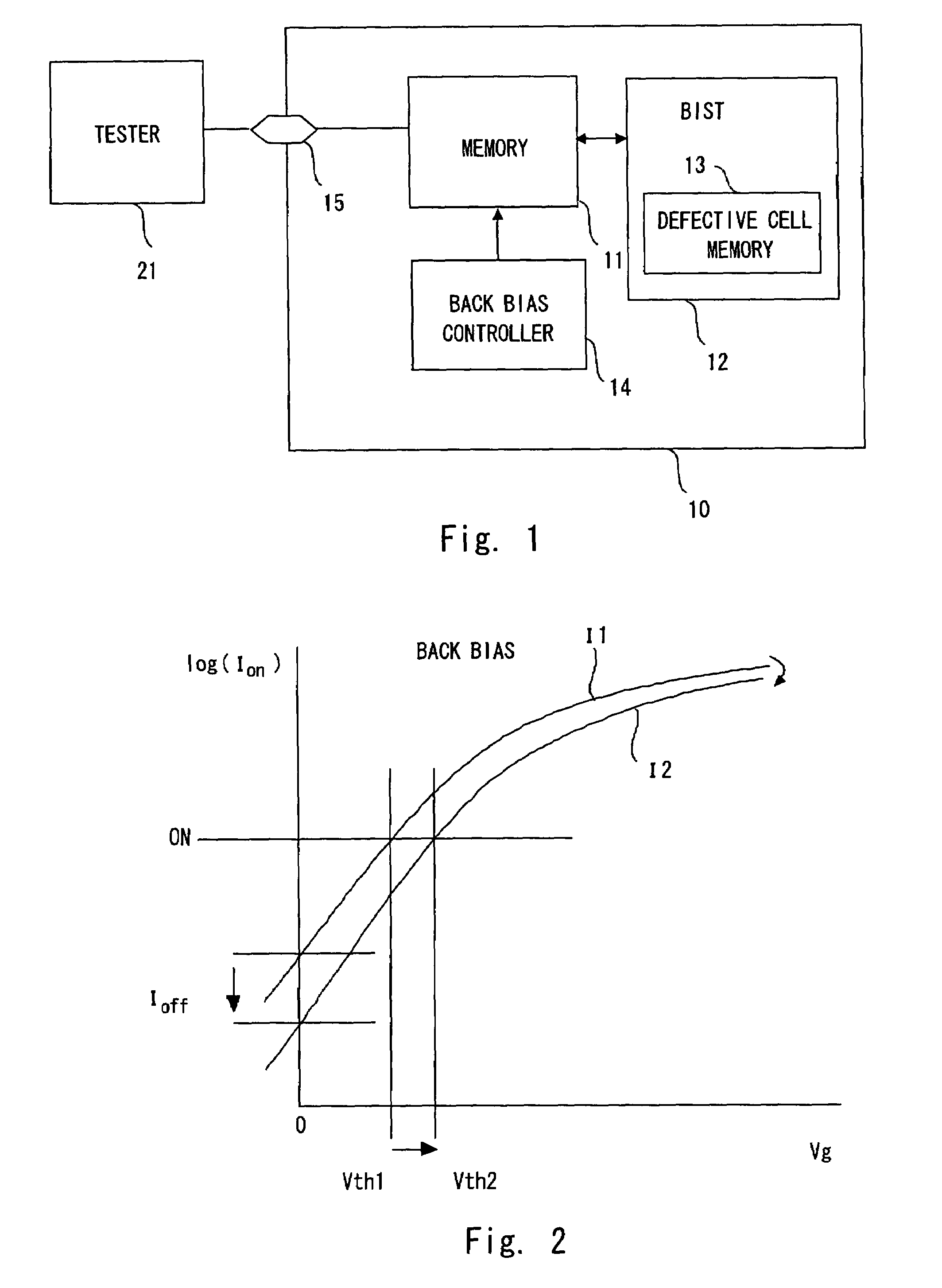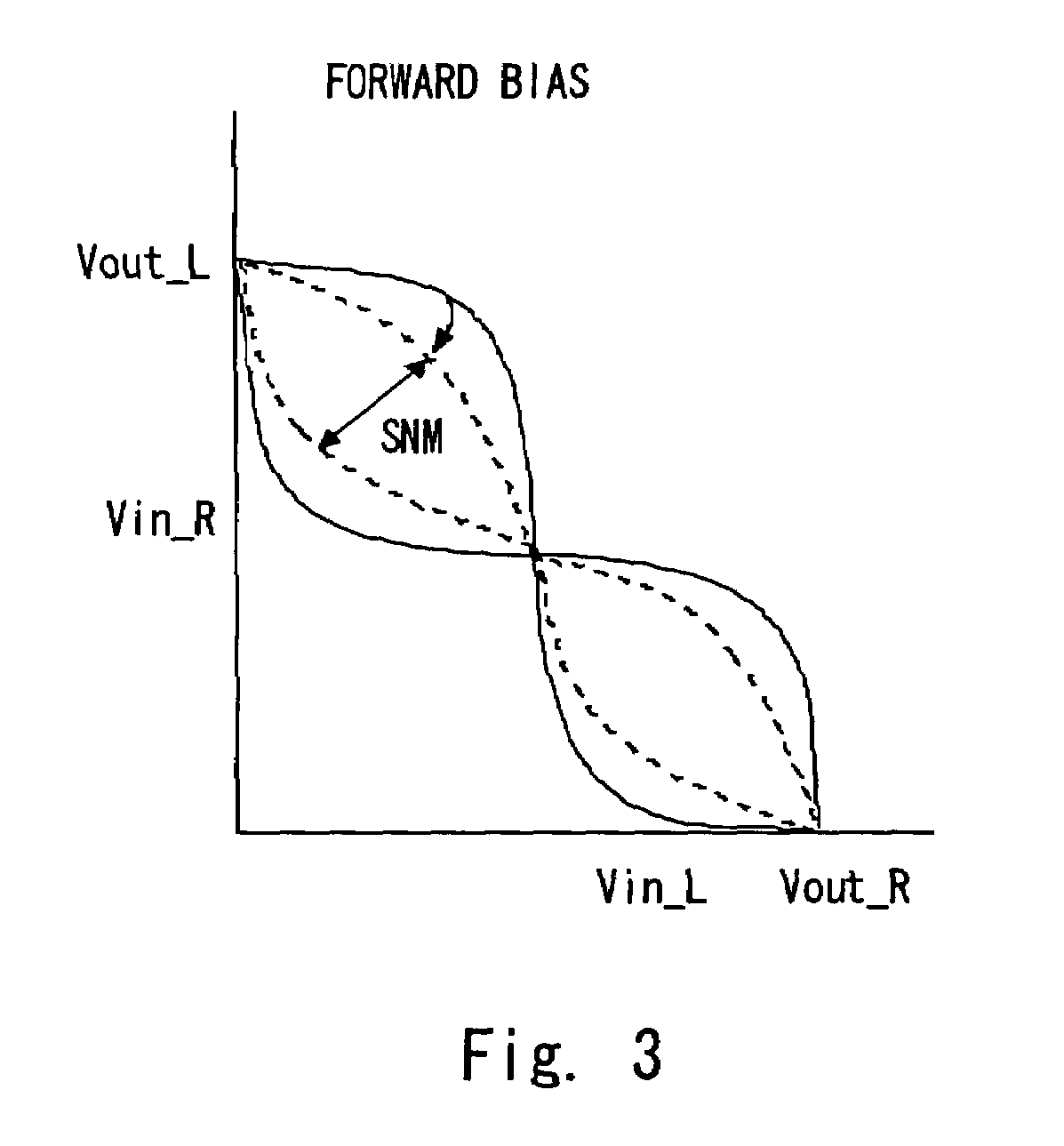Method of testing semiconductor apparatus
a technology of semiconductor apparatus and test method, which is applied in the direction of information storage, static storage, digital storage, etc., can solve the problems of memory malfunction, high cost, and high cost of semiconductor apparatus, and achieve high detection sensitivity of defective mode, improve detection sensitive, and improve the effect of snm defect detection
- Summary
- Abstract
- Description
- Claims
- Application Information
AI Technical Summary
Benefits of technology
Problems solved by technology
Method used
Image
Examples
Embodiment Construction
[0024]The invention will now be described herein with reference to illustrative embodiments. Those skilled in the art will recognize that many alternative embodiments can be accomplished using the teachings of the present invention and that the invention is not limited to the embodiments illustrated for explanatory purposes.
[0025]Exemplary embodiments of the present invention are described hereinafter in detail with reference to the drawings. FIG. 1 is a schematic diagram showing a semiconductor apparatus according to an embodiment of the present invention. A semiconductor apparatus 10 includes a memory 11, a BIST 12, a back bias control circuit 14, and a terminal 15 for test. The BIST 12 includes a defective cell memory 13 which stores a defective address when a defective cell is detected. The defective cell memory 13 may be placed outside of the BIST.
[0026]The back bias control circuit 14 controls the back bias of the N channel and P channel transistors that constitute a memory. I...
PUM
 Login to View More
Login to View More Abstract
Description
Claims
Application Information
 Login to View More
Login to View More - R&D
- Intellectual Property
- Life Sciences
- Materials
- Tech Scout
- Unparalleled Data Quality
- Higher Quality Content
- 60% Fewer Hallucinations
Browse by: Latest US Patents, China's latest patents, Technical Efficacy Thesaurus, Application Domain, Technology Topic, Popular Technical Reports.
© 2025 PatSnap. All rights reserved.Legal|Privacy policy|Modern Slavery Act Transparency Statement|Sitemap|About US| Contact US: help@patsnap.com



